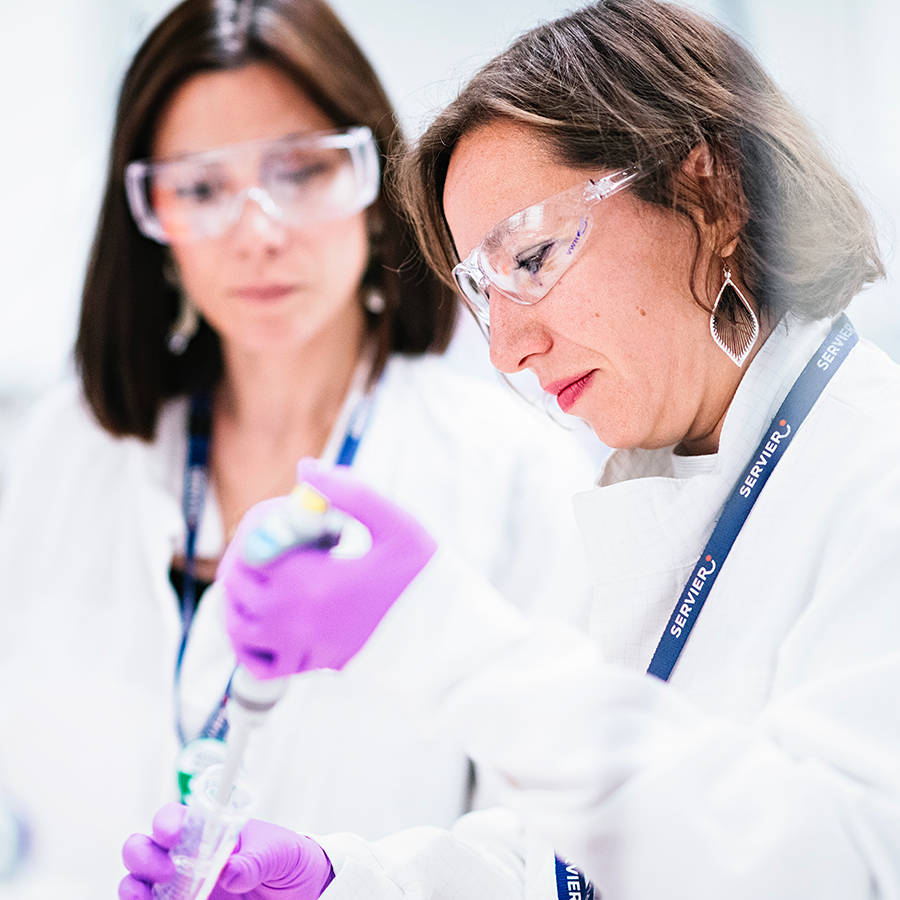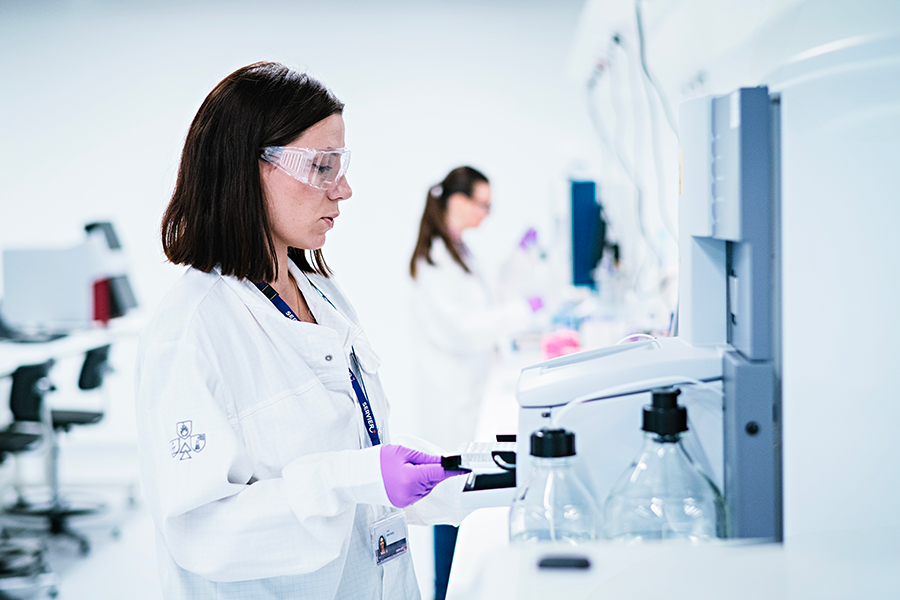Precision medicine, which tailors treatment to the individual characteristics of a patient’s illness, is an exciting field with a myriad of opportunities for therapeutic innovation. In this context, companion diagnostic (CDx) tests are a perfect illustration.
How is a companion diagnostic test developed? What are the benefits? What are the challenges? Read on for more insights.
The FDA definition of a companion diagnostic is “an in vitro companion diagnostic device (IVD companion diagnostic) that provides essential information for the safe and effective use of a corresponding therapeutic product.”1
Companion diagnostic tests can be performed on different biological samples including a tissue biopsy or a sample of blood/plasma or bone marrow using different genomic (next generation sequencing, qPCR) or protein-based technologies (immunohistochemistry). In the case of cancer, a companion diagnostic test may identify whether a patient’s tumor has a specific genomic anomaly, such as a mutation, or altered expression of a protein which is predictive of an improved efficacy for the therapeutic drug.
Companion diagnostic tests represent more targeted and personalized medicine for multiple diseases. The treatment/test (Rx/CDx) couplet provides multifaceted value to many different stakeholders: physicians, payers, regulators, pharmaceutical and diagnostics companies. First and foremost, they enable the patient to benefit from the maximum likelihood that they will respond to the therapy.
Insight on companion diagnostic test development
The process that leads to the discovery and eventual implementation of a companion diagnostic is generally rooted in lengthy and protracted phases of scientific and clinical research. The aim is to demonstrate the ability of an identified biomarker to predict which patients will respond best to a specific drug.
6 key stages
There are six key stages involved in developing a companion diagnostic test, all of which must be synchronized with drug development:

Companion diagnostic tests are developed in parallel to the therapeutic solution. This has the advantage of enabling simultaneous approval based on the clinical benefit demonstrated in a pivotal registration trial for a selected therapeutic drug in a specific disease indication.
Currently, in the US the vast majority of companion diagnostic tests have been approved in oncology.
The next step is for the pharmaceutical company to file a marketing authorization application for the drug — and for the companion diagnostic test developer to simultaneously file for authorization for the test. If application is granted, it is mandatory that the companion diagnostic test be used before treatment with the therapeutic solution. Companion diagnostics are generally characterized by a triad of criteria, the therapeutic product, the diagnostic test and the intended use (the specific disease setting).
Companion diagnostic test development challenges
The bedrock to the development of a companion diagnostic test is robust scientific and clinical evidence. The collaborative implication of therapeutic divisions, translational medicine, regulatory affairs, legal, medical affairs, and market access are required, to ensure the most appropriate choice of biomarker, technology, partner, in addition to the strategic development and commercialization plan.
One key criterion for CDx tests is that they should align with the known patient journey in the specific disease setting. Likewise, analytical, and clinical robustness will mitigate any possible diagnostic errors for the patient. Moreover, when possible, the test should have a reasonably rapid turnaround time (TAT) to enable the physician to make a rapid, informed decision on the appropriate treatment for their patient. Companion diagnostic tests should also be easily accessible so that physicians can leverage appropriate testing when therapeutic options are available to the patient.
In collaboration with the companion diagnostic test manufacturer, the pharmaceutical company markets the therapeutic solution jointly with the companion diagnostic test.
A global challenge
It is also important that a CDx partner has a global footprint because the regulatory procedures and requirements for companion diagnostic test approval applications differ from country to country. Currently, there are four major territories (US, EU, Japan, China) where approval of a companion diagnostic test is mandatory and associated with the market approval (and sometimes reimbursement) of the therapeutic product. Moreover, this situation is evolving, and in the coming years, additional territories such as Australia, Canada, South Korea aim to gradually phase in mandatory companion diagnostic test approval for a therapeutic product.

About Servier
To meet the growing need for new therapeutic solutions, we have made oncology one of our top priorities to which we devote over 70% of our R&D budget.
Our aim is to drive innovation in precision medicine. We want to be at the forefront of advances for patients to provide treatments where they are needed most. With a model based on drug companion test codevelopment, we are entering a new era.
Precision medicine shines new light, deepening the understanding of disease and reducing the time between the discovery and the clinical development phases. Close collaboration between researchers and clinicians adds valuable insight and increases the probability of success.
CDx tests aim to accelerate the advance of personalized medicine. This approach aligns perfectly with Servier’s mission to provide better treatments and improve quality of life for patients all along the treatment journey.
Picking up the pace of research and efforts to develop new therapeutic solutions: find out more about R&D at Servier
[1] US Food and Drug Administration – Medical devices – June 2023 https://www.fda.gov/medical-devices/in-vitro-diagnostics/companion-diagnostics

